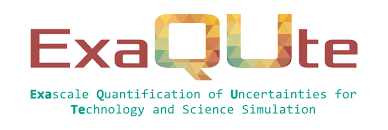Projects
The ORCAS project aims to bring new light to the biological carbon pump, the process by which atmospheric carbon dioxide is sequestered in the deep ocean in the form of sinking particles produced by plankton. The objectives of ORCAS are to:
• validate a state-of-the-art biogeochemical model against novel high-resolution mesaurements made by drifting underwater...
The interaction between High-Performance computing (HPC) and Artificial Intelligence (AI) is creating a new horizon: "High-Performance Artificial Intelligence" (HPAI) that is fueling the growth of platforms, applications and products empowered by AI. Although AI is not a new field of research, recent advances in HPC have given AI the necessary tools to become a game changing...
The goal of this project is to assess the suitability of the NEMO code to run simulations on extremely high resolution global grids and provide information on the major bottlenecks constraining its scalability, in order to address the ever-increasing demands of oceanic forecasting and facilitate the deployment of these configurations in the next years. Special focus will be...
The ExaQUte project aims at constructing a framework to enable Uncertainty Quantification (UQ) and Optimization Under Uncertainties (OUU) in complex engineering problems using computational simulations on Exascale systems. The stochastic problem of quantifying uncertainties will be tackled by using a Multi Level MonteCarlo (MLMC) approach that allows a high number of...
According to the 2014 European Society of Cardiology Guidelines, cardiomyopathies are defined as structural and functional abnormalities of the ventricular myocardium that are unexplained by flow limiting coronary artery disease or abnormalloading conditions. There are four major classifications of cardiomyopathy:
- hypertrophic (HCM),
- dilated...
Computers increasingly intervene in critical aspects of our life related to health, safety, and security, resulting in (critical) software controlling functionalities or services with humans in the loop. This trend towards critical-function digitization brings huge benefits for society and rests two pillars: the use of high-performance parallel hardware as the only viable option to cover the...
The ability to use geothermal resources to generate heat in urban areas where the demand is greatest has the potential to significantly reduce our reliance on fossil fuels and to support sustainable energy policies. Potential deep geothermal resources in challenging, lower-enthalpy EU settings remain poorly understood and largely untapped.
The...
The current HPC facilities will need to grow by an order of magnitude in the next few years to reach the Exascale range. The dedicated middleware needed to manage the enormous complexity of future HPC centers, where deep heterogeneity isneeded to handle the wide variety of applications within reasonable power budgets, will be one of the most critical aspects in the evolution...
Europe has made significant progress in becoming a leader in large parts of the HPC ecosystem: from industrial and scientific applicationproviders via system software to Exascale systems, bringing together technical and business stakeholders. Despite such gains, excellence inresearch in high performance computing systems is fragmented across Europe and opportunities for...
SOLWATT targets to significantly reduce the water used by CSP plants (by 35% for wet cooled & by 90% for dry cooled). The project proposes to demonstrate the efficiency of innovations on solar field cleaning, power-block cooling, waterrecycling system, and plant operation strategy. Among these are solutions to reduce solar field water cleaning needs, anoperation and...









